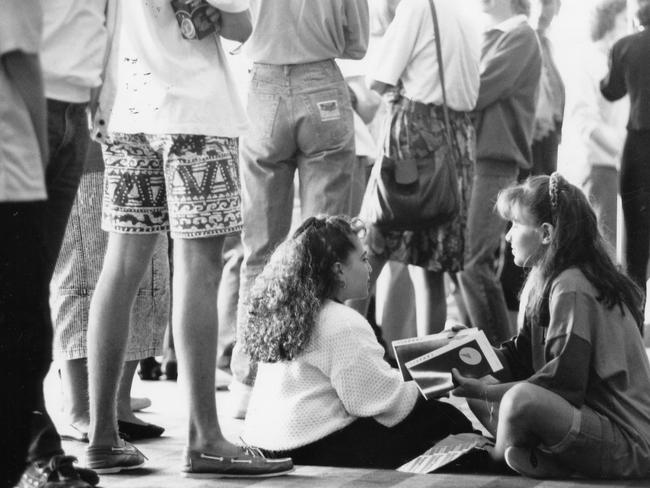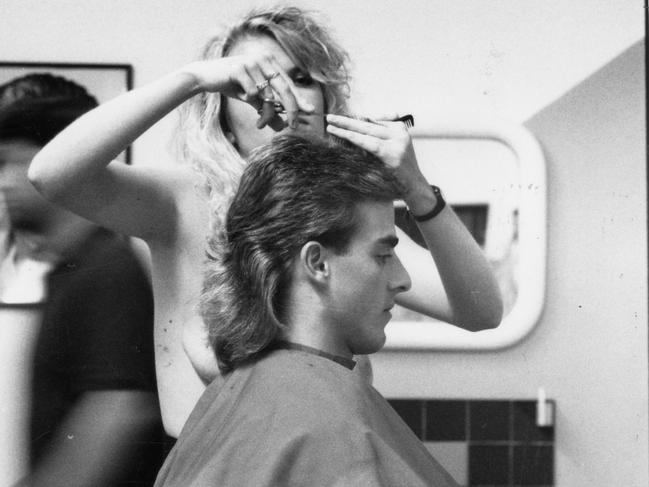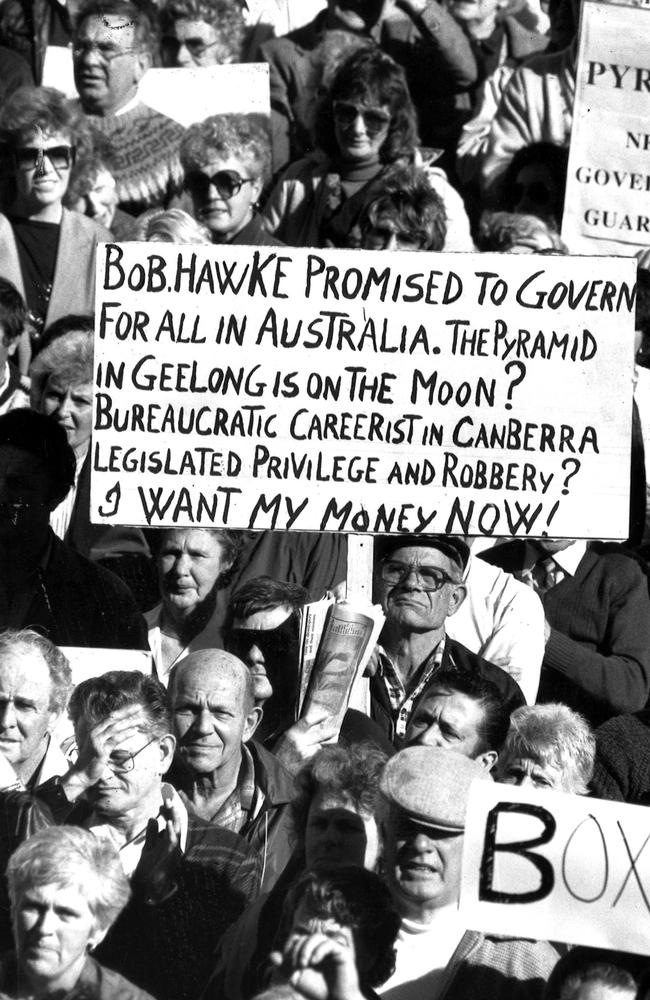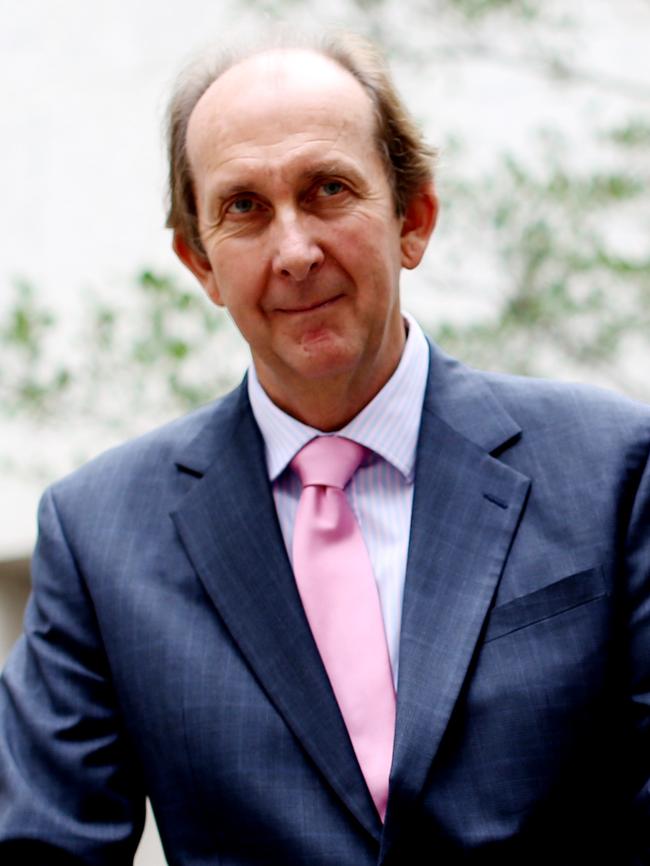What the last recession in Australia was really like
Sky-high interest rates, jobless queues, businesses hitting the wall … and topless hairdressers. This is what it was like to live through the ‘recession we had to have’.
July 1990. Iraq is on the brink of invading Kuwait. Bob Hawke sits in The Lodge. The Simpsons is the breakout hit of American TV. In Australia, Roxette’s It Must Have Been Love battles MC Hammer’s U Can’t Touch This for chart dominance. And while many don’t realise it at the time, the country has just slipped into a recession.
On November 29, Paul Keating breaks the news to the nation with the startling claim that it is “the recession Australia had to have”.
The recession technically lasted one year — from the September quarter of 1990 to the September quarter of 1991 — but high unemployment, massive interest rates and business failures would affect many Australians for years afterwards.

The national accounts were back in the black by the second quarter of 1991, and have stayed that way for a remarkable 28 years, meaning an entire generation has grown up without ever knowing how bad a recession can be.
This week’s revelation that Australia’s quarterly Gross Domestic Product had slumped to just 0.5 per cent - the worst result in ten years - triggered fears that the country could be heading for a recession.
But the Treasurer and market experts believe the fundamentals of the economy remain strong: strong exports, low inflation, and a stable unemployment rate.
None of our current prosperity could be foreseen towards the end of 1990. Industry minister John Button memorably described it as a time when “misery and despair descended on the country like a yellow fog” in his memoir.
Interest rates hit 17.5 per cent. The unemployment rate jumped from 6 per cent earlier in the year to almost 9 per cent by November, and it would keep climbing; one in nine Australians would be out of work by December 1992.


Businesses were failing at an alarming rate, including some big ones: the State Bank of Victoria and the Pyramid Building Society in 1990, and the State Bank of South Australia in 1991. The country’s first low-cost airline Compass also went bust, twice, within three years of its 1990 launch.
Plenty of small retail and manufacturing firms were feeling the pinch too, with the number of business-related bankruptcies jumping markedly — from 2947 in the 1989-90 financial year, to 4203 the next year and 5387 the year after that.
Economist Tim Harcourt from the University of NSW, who was working for the ACTU at the time, recalls desperate retail outlets in the early 1990s resorting to topless staff in order to bring customers through the door.
His memory is borne out by a 1992 article from the Alternative Law Journal, which noted: “Topless trading has also spread into the retail area, with hardware shops in Geelong and
Mordialloc, an auto parts store in Frankston and even a take away food outlet in Oakleigh using topless promotions to attract customers. In South Australia, topless hairdressers and taxi drivers have also been reported.”

Victoria and South Australia were the states most badly affected by the recession, Mr Harcourt said — leading to them being dubbed “the rust belt” at the time (a term borrowed from the US), and prompting a big wave of internal migration to Queensland.
“It was a pretty challenging time,” recalled business expert Peter Switzer. “A lot of middle-aged middle management people lost their jobs, and they had to reinvent themselves.
“But this also gave birth to the contracting revolution during the 1990s, which was ultimately helped by the internet.”
For those who weren’t able to reinvent themselves, the queue at the local CES (Commonwealth Employment Service) beckoned.

The dole for a single person over 21 with no dependants in 1990 was just $134.30 per week, and $243.20 if you had a dependent spouse.
It didn’t go very far. The average weekly rent in 1990 was around $125 (it’s now $427), a litre of petrol cost 81 cents (now currently around $1.40) and a McDonald’s Big Mac (burger only) cost $2.30 (it’s now $6.45).
Holidays, when they could be afforded, were simpler and usually domestic affairs. Data from 1989-80 shows Australians took a total of 2.1 million overseas trips then. We take about five times that number now.
The recession caused a boom in the number of people who were long-term unemployed — defined as people who had been out of work for an entire year. Early in 1991, national counts revealed there were about 150,000 long-term unemployed in Australia, but that figure doubled within a few years, and did not return to that 1991 level for 10 years.

For those lucky enough to retain their job, some wage growth did continue despite the prevailing economic gloom.
“There were still moderate wage increases in the early 1990s, thanks to the Accord agreements,” said Mr Harcourt. “If you had a job you still got a payrise.”
Paul Wappett from the Australian Institute of Business was just making the transition from university to the workforce as the economy deteriorated, and he recalls law graduates who had secured work having their positions put on ice for up to 12 months until things improved.
“All of the work stopped; there were no great acquisitions happening, so you had young professionals sitting idle worried about losing their job because the economy had stopped,” he said.
“But at the same time there was enormous fear. There was a sense you had to work really hard, because you couldn’t afford to lose your job.”


RELATED:
Australian retail sector ‘in recession’ says DJ’s owner
What you should tell the tax office if you’ve had a big life change
Mr Wappett said Paul Keating’s remark about “the recession we had to have” created “a huge amount of palpable anger”.
“There was a sense of being abandoned by a government that seemed to have a lack of empathy,” he said.
Interest rates were a huge source of that anger — although it should be noted that the oft-quoted peak of the cash rate of 17.5 per cent was in January 1990, and by the end of that year it was at a slightly more manageable 12 per cent. At the end of 1991 the cash rate was at 8.5 per cent.
Modern economists point out that while the interest rates were high, people were borrowing far smaller sums, as houses were cheaper then, but Mr Switzer said the high rates of the late 1980s and early 1990s were punishing for many people.
“I remember selling my car and catching the bus to work to make those repayments,” he said.
“If you lived through it, there’s no doubt it was a tough time.”
Originally published as What the last recession in Australia was really like
